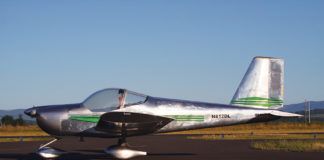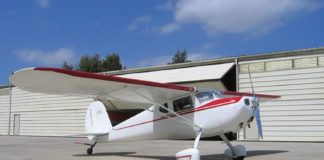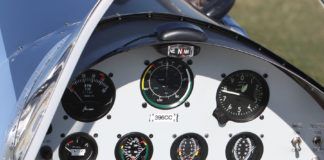
It isn’t often that one has the opportunity to interview some of the key figures in our industry, and it isn’t a simple assignment, either. Some of them have moved on from the positions they had when they changed the world and are now busy with new, potentially more impressive ideas and technologies. But with a little sleuthing during this years EAA AirVenture fly-in, I was able to talk with 12 industry luminaries, all of them answering just one question: What do you think has been the most significant change in homebuilding aircraft in the past 25 years? Heres what they said.
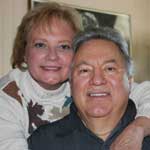 | Chuck Slusarczyk, founder of CGS Aviation and designer of the CGS Hawk (first fully enclosed ultralight aircraft). He is pictured here with his wife, Pix, who has been an integral part of the couples endeavors. Slusarczyk recently sold his business, but he retains an active interest in homebuilt aviation. Its a different person who builds an amateur-built aircraft today. Now everyone wants a store-bought kit. It used to be that people bought the design and the plans. The first kit I put out had 12 pages of plans. Now even that kit has 26 pages with detailed instructions and a video on how to put it together so that people do it just right. The government is more involved than ever in the process, it feels like to me, and of course that means the cost of these projects goes up. Back 25 years ago we had a certain amount of freedom while constructing, and I liked that freedom. But I guess Im just a common sense kind of guy. |
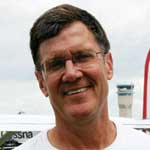 | Tom Peghiny, president, Flight Design USA, owner, Flightstar, Inc. and Flightstar designer. The biggest change in the last 25 years is the complete, user-friendly manufacturer-supplied aircraft kit. I believe the first soup-to-nuts kit was the Christen Eagle. It was the beginning of the complete kit revolution. Then in 1981 I designed the Flightstar kit and it, too, was a complete kit. It made our airplane very popular to export. We supply everything including the wires and switches. I worked on the policy for Light Sport for 15 years. The ELSA concept is great-an 80% complete kit that has to be completely built as the manufacturer recommends. And now Ive gone totally retro, and Ive got a Part 103 Ultralight with an electric engine on it. |
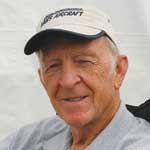 | Dick VanGrunsven, CEO, Vans Aircraft, designer of the RV series. I don’t think there have been any great configuration changes to the airplanes or to the aerodynamic qualities in general. I don’t even think there have been any real revolutions in composite materials. Whats changed in 25 years is the advancement of aluminum airplane kits. The CNC revolution, where computer-controlled, match-hole drilling of aluminum components allows builders to precisely assemble the parts of a kit plane, has changed everything. More kit aircraft, in sheer numbers, have benefited by the CNC revolution in aluminum manufacturing than anything. The airplanes have gotten easier to build, less intimidating to the ordinary guy. This is a big factor for homebuilders-they have to believe that they can build it. You can have a fantastic airplane, but if it is so difficult to build that the typical person cant build it, you wont find many of those aircraft here at the EAA AirVenture convention. |
 | Jim Irwin, president of Aircraft Spruce & Specialty. I would have to say the biggest change in the industry was the transition from almost all scratch-built aircraft that we were selling a lot of bolts and aluminum for, to the advent of complete prefabricated kits. There have been a lot of changes in the kind of product we stock because of that development. We were once furnishing metals and wood and composite materials, but we’ve had to get more and more into aftermarket parts to the point that we now try to carry everything someone needs to complete an airplane including batteries, tires, brakes, avionics…whatever, but not the engine, because it is a low margin product and we cant really compete with the engine shops. |
 | Tom Poberezny, president, Experimental Aircraft Association (EAA). I think the most significant change in the industry is the acceptance of homebuilt airplanes as normal by the general aviation community. Last year we celebrated the 30,000th homebuilt certified. If you did not have those 30,000 airplanes flying out there, I think GA would really be hurting. People are amazed that such a large percentage of the GA fleet is homebuilt. I say that the homebuilt movement gives people more flexibility of design and options. Whats more, the homebuilt industry spawned certified airplanes-from Cirrus and the Columbia to all of the LSAs-all in the last 25 years. |
 | Randy Schlitter, founder RANS Aircraft, Inc., designer of the RANS series of aircraft and bicycles. I believe the most significant change in homebuilding in the last 25 years was the evolution of the kit aircraft from a box of sheet metal to the complete kit, such as what RANS sends out. Otherwise, the person has to be a real good shopper. We pushed it to the limit, giving the builder the wires, the batteries, the battery box, the engine, everything you need. We had one aircraft where literally you could drag the kit box out into the desert with tools, oil and a little gas, and you could build and then fly away the airplane. The advantage of the complete kit is that fleet experience becomes validated because you can keep all the airplanes in conformance with the kit manufacturers specifications. Also, we want to be your aircraft whether you want to build your aircraft or not. Today we offer the SLSA or Experimental/Amateur-Built kit. The fun part of doing a conformed kit is that the builder gets an airplane just like what the kit sales guy sold him. And it is safer, too. |
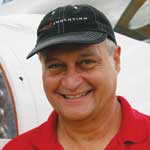 | Joe Bartels, CEO, Lancair International, Inc. I think the most significant change in the last 25 years is that we are producing kits with pre-impregnated high-performance composites materials, which gives a stronger, easier manufacturing process. Lancair is just 25 years old, and we’ve done that all along. The process allows people to build kits without having to lay up and make composite materials at home. It gives a much more consistent manufacture and strength. The perfection and consistency of the parts is now such that once we close out a wing with a customer, if he needed another wing, we could send the parts and they would fit right onto his airplane. The performance of the aircraft across the fleet is also consistent. The process makes the airplanes safer throughout. |
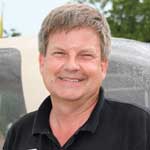 | Alan Klapmeier, co-founder, Cirrus Design. This is probably a self-serving answer, but I think it is true: Homebuilding and homebuilt aircraft have, in the last 25 years, been accepted by the aviation industry as a whole and therefore changed the industry completely. The ideas generated in the homebuilt industry have been integrated into the mainstream. Look at Rotax engines, for example. Those engines started in snowmobiles and now they are in certified aircraft. Avionics, too-including EFIS technology-have changed because of innovations that came straight from the homebuilding world. |
 | Phil Lockwood, owner, CEO Lockwood Aviation, Lockwood Aviation Repair, Lockwood Aviation Supply, Lockwood Aircraft and AirCam designer. The electronics have advanced a lot, and at an ever increasing rate, and I think this is a radical change for the industry. It is to the point now that you can buy the latest electronic flight information system (EFIS) for your airplane, and two years later it is obsolete and there is something on the market that is infinitely better. It is incredible. I like the way the electronics and the software are all integrated with autopilots and engine and fuel sensors all built into them-those are revolutionizing the industry. The price point, too, is part of what makes them so interesting. They are affordable. In some ways EFIS electronics make flying safer. The new autopilots can get a pilot out of trouble just by holding the airplane straight and level in a jam. And I think the new artificial horizons are easier to fly than the old analog ones. Plus, they run on less power. We don’t need vacuum systems anymore. They are more reliable, lighter, and this allows some people who would not put an attitude indicator in their airplane to do so now, again making their airplanes safer. |
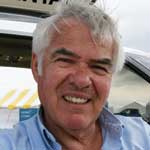 | Duane Swing, Velocity Aircraft CEO. In our business, the time it takes to build an airplane is critical. The FAA has allowed certain conditions to exist now where a builder can come to the factory and pay for professional assistance from factory-trained staff. That cuts the time the builder must spend building to a fraction of what it used to be, and that is the most significant change we’ve had in the industry. The builder gets enough experience building to maintain the aircraft safely and apply, legally, for the Repairmans Certificate, and he/she gets an airplane that has been built to factory quality specifications. Thats a monumental change. It will be a benefit to any manufacturers that can afford to set up this kind of builders assistance program. We estimate for Velocity it will cost upwards of $200,000 to set up the program, because presently the parts we make are designed where the builder must build 51% of the airplane using time as the measurement; now we will go back and modify every mold that we have so that no longer does the builder have to do something with those parts. They will be molded such that the labor for the builder decreases. It will be more expensive, but someone who can afford [a $300,000 project] does not have a lot of time to build, and will see this as an attractive program. |
 | Dale Klapmeier, co-founder, Cirrus Design and vice chair of Cirrus Aircraft. Ill say the change is the development of the real aircraft kit. I know, because it was 25 years ago, January 1984, when my brother and I started working on developing our own kit. The first kit plane was the Christen Eagle. That was areal kit, everything included and with enormous manuals, but it was not an easy airplane to build. Today kits have been simplified to the point where someone can get a unique, fun, safe and good performing aircraft in a kit, and actually expect to complete it without having to be an aeronautical engineer or a production engineer. |
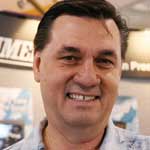 | Lance Turk is the current director of product development at JPInstruments (JPI) and founder of Vision Microsystems. Somewhere in the mid-1980s I looked at the Long-EZ, but I realized you had to deal with foam and mold and cutting and laminating. I was a fledgling engineer, and it was intimidating even to me. And one day a co-worker showed me a KITPLANES magazine, and here was this Glasair kit in it. So I think the most significant change in the last 25 years is the ease with which people can build these kits. The kits are more complete, punched, drilled and anodized. You no longer have to be a scientist to build them. Now a guy with a lot of passion can build an aircraft from a kit. Id like to say that the avionics and neat new toys that go in the airplanes are most significant, but really the increase in numbers is definitely because of the ease now in building the kits, and I peg that development to Stoddard-Hamilton. Vans Aircraft (and others) have certainly refined the kit to make the projects doable, and thats critical to the success of this industry. |

